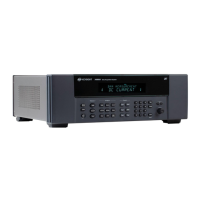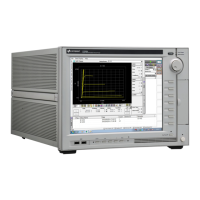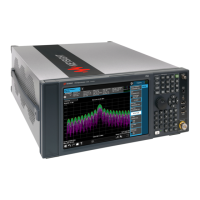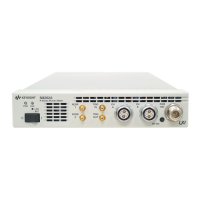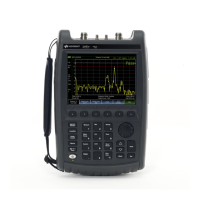5 Programming Examples
250 Keysight Models 6811C, 6812C, and 6813C Programming Guide
Making Measurements
The ac source has the capability to return a number of current, voltage, and power
measurements. When the ac source is turned on, it is continuously sampling the
instantaneous output voltage and current for several output cycles and writing
the results into a buffer. The buffer holds 4096 voltage and current data points.
The ac source uses the data from the voltage and current buffer to calculate the
requested measurement information. Data in the voltage and current buffers is
always re-acquired for subsequent measurement requests. There are two ways to
make measurements:
– Use the MEASure commands to immediately start acquiring new voltage and
current data, and return measurement calculations from this data as soon as
the buffer is full. This is the easiest way to make measurements, since it
requires no explicit trigger programming.
– Use an acquisition trigger to acquire the voltage and current data from the
buffer. Then use the FETCh commands to return calculations from the data
that was retrieved by the acquisition trigger. This method gives you the
flexibility to synchronize the data acquisition with an external signal. FETCh
commands do not trigger the acquisition of new measurement data, but they
can be used to return many different calculations from the data that was
retrieved by the acquisition trigger.
Making triggered measurements with the acquisition trigger system is discussed
under “Triggering Measurements” on page 254.
For each MEASure form of the query, there is a corresponding query that begins
with the header FETCh. FETCh queries perform the same calculation as their
MEASure counterparts, but do not cause new data to be acquired. Data acquired
by an explicit trigger or a previously programmed MEASure command are used.
